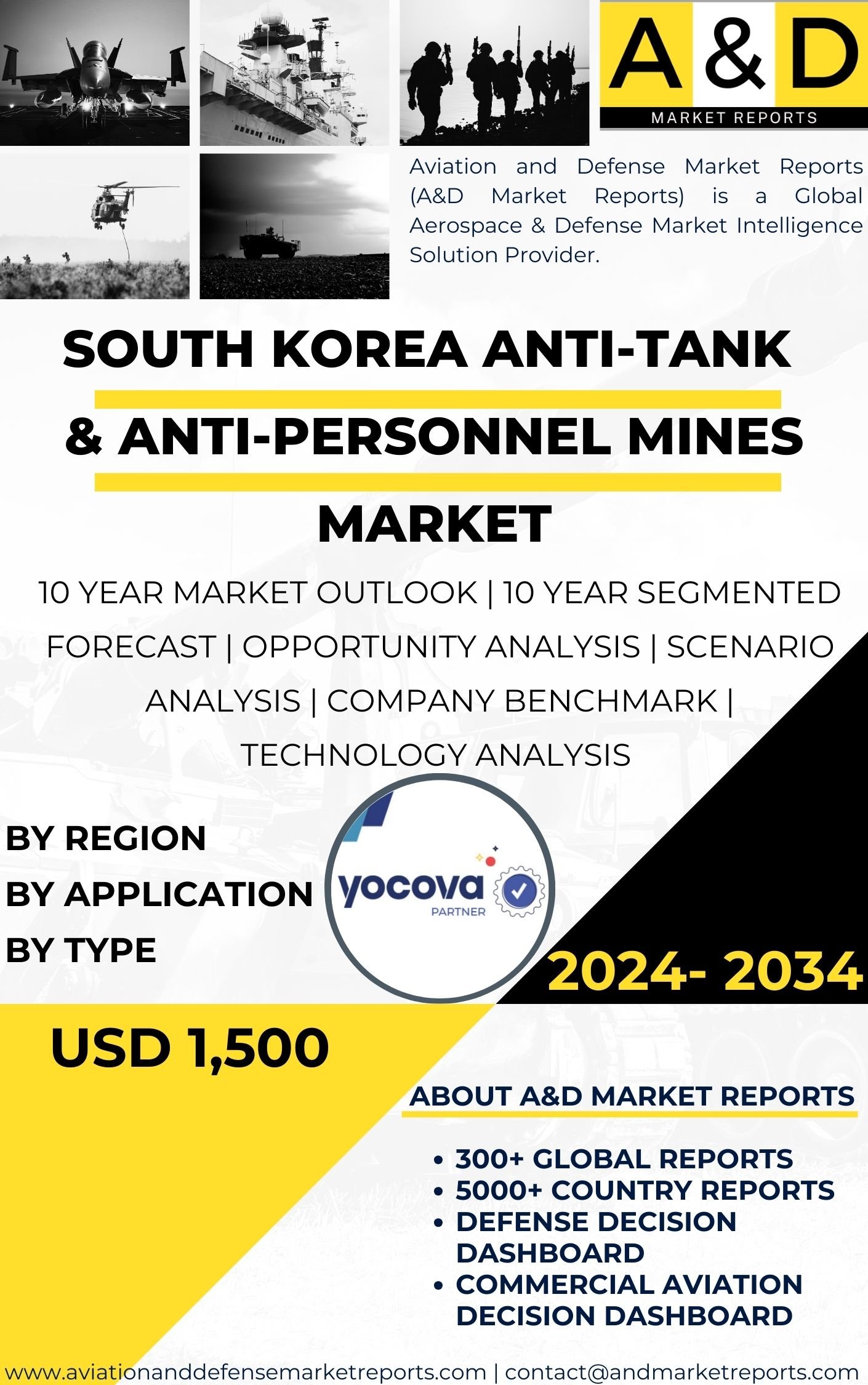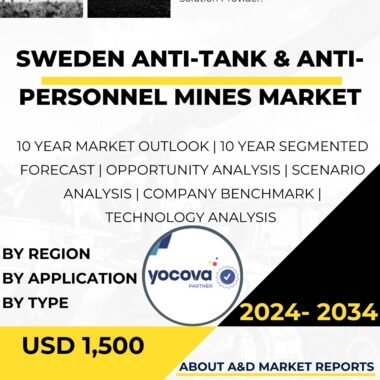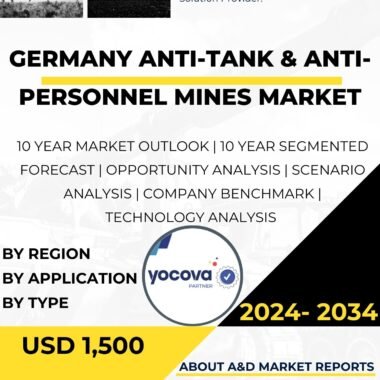Description
South Korea Anti-Tank & Anti-Personnel Mines Market
The South Korea anti-tank & anti-personnel mines market is a critical and strategically significant segment of the country’s defense industry, providing advanced landmine solutions to enhance the country’s military capabilities. Mines, both anti-tank and anti-personnel, are crucial assets for a nation’s defense, as they play a vital role in deterring potential threats, safeguarding territorial boundaries, and protecting strategic assets. South Korea’s focus on indigenous development, technological innovation, and strategic partnerships has positioned it as a notable player in the global anti-tank and anti-personnel mines market.
Anti-tank mines are designed to incapacitate or destroy armored vehicles, such as tanks and armored personnel carriers, by detonating upon contact or proximity to the vehicle’s hull. These mines are highly effective in denying enemy armored units access to certain areas, thereby impeding their movements and disrupting their offensive capabilities.
Anti-personnel mines, on the other hand, are intended to target individual soldiers or enemy personnel, inflicting casualties and restricting enemy movements. These mines pose a serious threat to enemy infantry, making them highly effective in providing tactical advantages to defending forces.
Indigenous development has been a cornerstone of South Korea’s approach to the anti-tank and anti-personnel mines market. The country’s defense industry, represented by companies like Hanwha Defense and LIG Nex1, has made significant strides in developing advanced landmines tailored to meet the specific requirements of the South Korean military.
The South Korean military heavily relies on anti-tank and anti-personnel mines to enhance its defensive capabilities and protect strategic areas, such as border regions. These mines play a vital role in creating defensive barriers, securing key positions, and deterring potential threats from hostile forces.
Beyond defense applications, South Korea also emphasizes demining efforts to clear areas of landmines that have been laid in the past. Demining efforts are essential for civilian safety, as landmines can pose serious risks to civilians living in or near mined areas.
South Korea’s commitment to innovation and research and development (R&D) has driven significant advancements in mine technology. The country invests in R&D programs to improve mine detection and neutralization techniques, enhance mine durability and safety features, and explore advanced mine disposal technologies.
Strategic partnerships with international defense and technology companies have also contributed to South Korea’s anti-tank and anti-personnel mines capabilities. Collaborations enable technology transfer, joint research, and the integration of foreign mine technologies into South Korea’s indigenous platforms, enriching the overall mine capabilities of the country’s defense industry.
To ensure optimal utilization and safety, South Korea places significant emphasis on training and skill development for its military personnel involved in mine deployment and demining efforts. Training programs focus on minefield planning, mine detection, mine neutralization, and minefield marking to minimize the risk of accidental detonations and ensure effective minefield management.
Moreover, safety and adherence to international treaties are paramount considerations in the anti-tank and anti-personnel mines market. South Korea is a signatory to the Ottawa Treaty, also known as the Anti-Personnel Mine Ban Convention, which bans the use, production, stockpiling, and transfer of anti-personnel mines. The country remains committed to compliance with international norms and obligations related to mine use and clearance.
In conclusion, the South Korea anti-tank and anti-personnel mines market is a critical aspect of the country’s defense capabilities. Indigenous development, strategic partnerships, and innovation have allowed South Korea to create advanced landmine solutions that meet the specific needs of its military and contribute to enhancing its defensive capabilities. From deterring armored units to safeguarding key positions, anti-tank and anti-personnel mines play a pivotal role in strengthening South Korea’s military readiness and ensuring the security of its borders and strategic assets. As the defense industry continues to evolve, South Korea’s dedication to advancing its mine technology and demining efforts will remain essential in maintaining its position as a major player in the global anti-tank and anti-personnel mines market.




